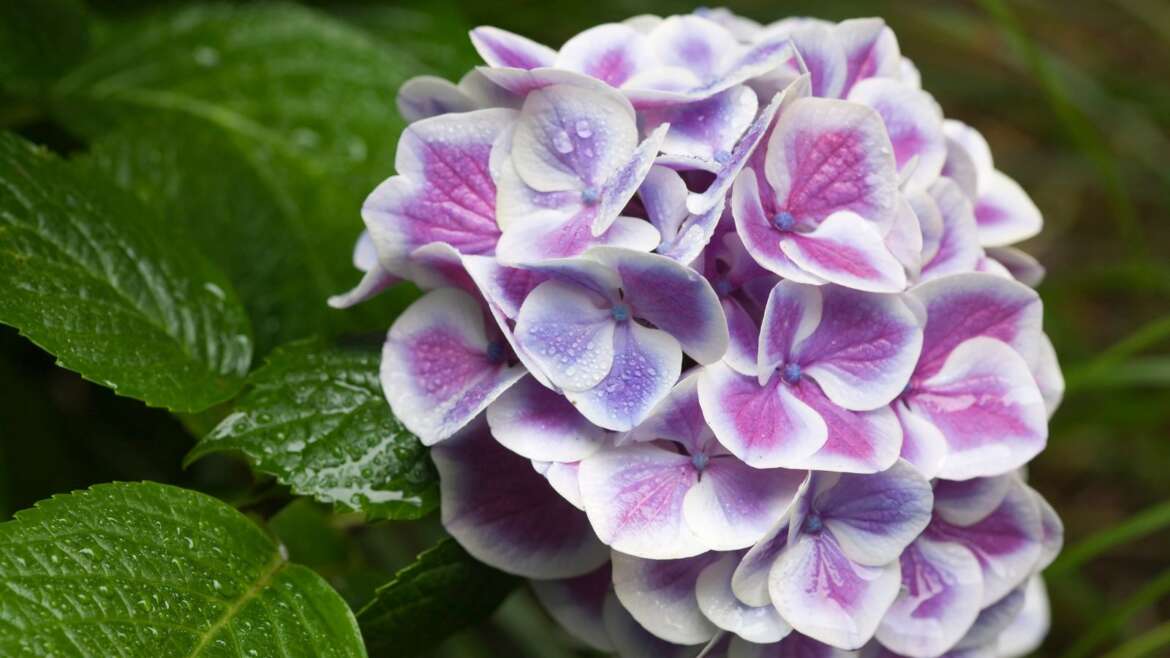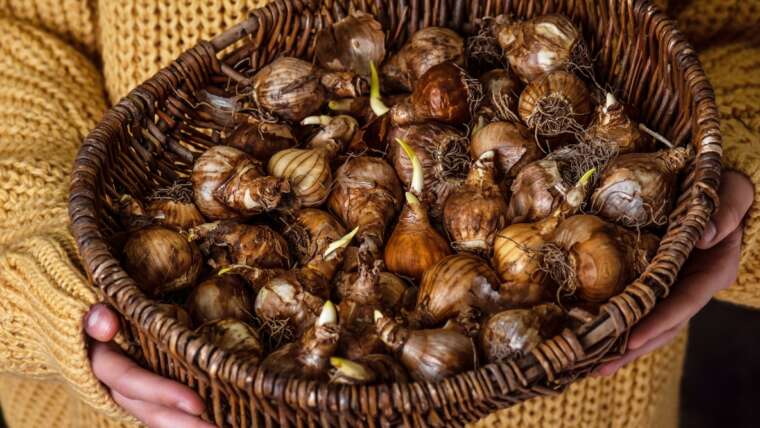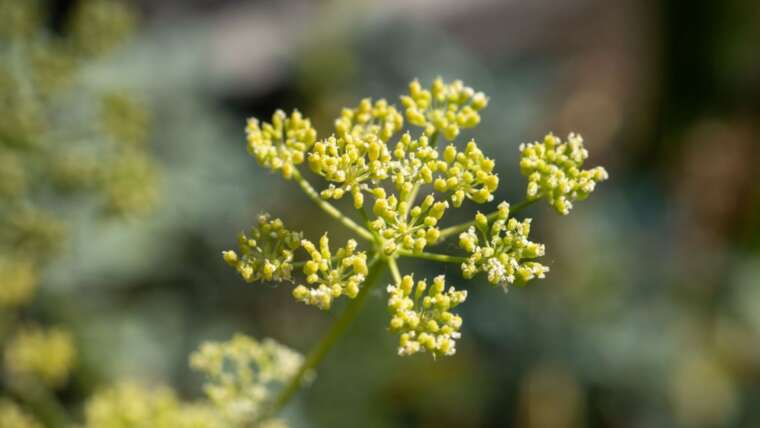Hydrangeas are popular flowering shrubs thanks to their cloud-like clusters of colorful flowers. Some varieties have round blossoms that look like marshmallows, others display elongated panicles, and some have flattened flower heads resembling lace scraps. With so many hydrangea varieties to choose from, it can be challenging to decide which one you want to plant.
If you’re looking for a variety with interesting flower colors or an impressively small shape, you’re in luck. I’ll share some unique hydrangea varieties that stand out from the crowd.
Planting Hydrangeas in Fall
Fall is a great time for planting perennials, including hydrangeas. While these shrubs are often found blooming at nurseries in the summer, researchers confirm that the cool weather of spring or autumn are best for planting. The remnants of summer’s warmth encourage the plant’s roots to grow into the surrounding soil, while the cool winter temperatures allow the plants to settle into their homes.
When you’re planting, aim to get your hydrangeas in the ground four to six weeks before the first frost. This will give the plants enough time to acclimate to the outdoors before frost arrives without exposing them to intense heat.
Choose a location with well-drained soil regardless of which variety you’re planting. Many varieties on this list prefer morning sun and afternoon shade, but some can adapt to dappled light or full sun. Wherever you plant, avoid fertilizing at planting and keep the soil moist in the weeks following transplanting.
As long as your plants survive the winter, they’ll resume growing in the spring. You can expect to enjoy foliage and blooms in the first year.
‘Buttons ‘n’ Bows’
They change color from light green to pink and white.
A hybrid cultivar of the big leaf hydrangea, ‘Buttons ‘n’ Bows’ stands out thanks to its bicolor flowers. Each flower cluster is made up of hundreds of individual florets featuring multi-colored petal-like sepals. They emerge light green before quickly turning pink and white. The interior of each sepal is pink, and the outside is edged in white.
This variety also features beautiful leaves that grow to half a foot long. They remain green throughout the summer before turning maroon in the fall.
Although this variety is beautiful, it can’t tolerate extreme cold. It will survive winters in zones 7 through 9 and can survive in zone 6 with protection. Planting it along a south-facing wall will also help it survive the cold.
Seaside Serenade® ‘Fire Island’
 They start out with bright pink edges that turn deeper as they mature.
They start out with bright pink edges that turn deeper as they mature.
All of the colors in the Seaside Serenade® are beautiful. But the ‘Fire Island’ hydrangea variety is a true showstopper. Not only does it feature beautiful bicolor florets, but the sepals of the florets have a wavy edge that makes them look like vintage lace.
The florets start out white with bright pink edges, then turn a deeper pink as they age. They continue to bloom throughout the summer, leading to a continuous display. The leathery foliage remains green through the spring and summer before changing to an alluring maroon in the fall.
Since this is a compact variety, you can plant it in the ground or tuck it into large containers. Its impressive cold tolerance also makes it a suitable variety for gardeners throughout much of the United States.
‘Phantom’
 These conical blossoms can grow up to 15 inches long.
These conical blossoms can grow up to 15 inches long.
Panicle hydrangeas are known for their large flower clusters, but ‘Phantom’ receives the gold medal for large blooms. The flower heads can grow up to 15 inches long, and each one contains hundreds of individual florets. These florets start out light cream, then become dusted with a peachy pink as the growing season progresses.
Although the flowers are large, the study stems support their weight without breaking. When the large shrubs are mature and covered with blooms, they make an impressive sight in the background of mixed plantings and in front of homes. Just make sure to provide them with lots of space since the shrubs can grow up to ten feet wide.
‘Tilt-a-Swirl®’
 This hydrangea variety can bloom from spring through fall.
This hydrangea variety can bloom from spring through fall.
This unique bigleaf hydrangea variety has mesmerizing bicolor blooms that change throughout the season. The large flower clusters often start out bright pink and lime green and shift their color patterns over time. And since they bloom from spring through fall, you’ll never be left without color.
If you don’t like the vibrant flower colors, you can transform the blooms to blue by lowering the soil pH. A pH below 5.0 will result in blue flowers with hints of lime green.
The plants do best in partial sun and prefer morning light when given the choice. You can also plant them in the dappled light of shade trees.
‘Limelight’
 They start lime-green and transform to cream with dustings of rose-pink and burgundy.
They start lime-green and transform to cream with dustings of rose-pink and burgundy.
Although it’s not an uncommon hydrangea variety, ‘Limelight’ has impressively large cone-shaped panicles that make it unique from other cultivars. These blooms appear in late summer and early fall, adding beauty to the garden at a time when many flowers have started to fade. They emerge light green and eventually transform to cream with hints of rose and burgundy.
The plant’s foliage also changes colors with the seasons. The leaves remain green throughout the summer and change to deep red in the fall.
‘Limelight’ is also an especially cold-hardy variety and can successfully overwinter in zone three. Mulching the ground around the base of the plant will help protect the roots from cold and increase the chances of survival.
‘Sike’s Dwarf’
 They are small, and their panicles are only three to four inches long.
They are small, and their panicles are only three to four inches long.
If you love the appearance of oakleaf hydrangeas but don’t have the space for a tall shrub, ‘Sike’s Dwarf’ is for you. This unique compact hydrangea has deeply serrated, oak-like leaves and long flower panicles that are found on all oakleaf varieties. However, it only grows to three feet tall and four feet wide.
Since it’s small in stature, it has smaller leaves and flower clusters than larger oakleaf varieties. The panicles are only three to four inches long, but they fit in well with the smaller leaves. The blooms start out white and slowly change to light pink later in the summer.
The plant’s small size means you can even grow it in large containers. Just remember container-grown plants are more susceptible to cold than those growing in the ground. You can move the planters into a cool garage to help protect them from intense cold.
‘Blue Billow’
 They have tiny bud-like florets with larger showier florets.
They have tiny bud-like florets with larger showier florets.
A mountain hydrangea with lacecap flowers, ‘Blue Billow’ produces flat flower clusters composed of delicate bud-like florets and larger, showier florets. Since the smaller bud-like florets aren’t true buds, they’ll remain this small throughout the flowering season.
‘Blue Billow’ blooms emerge in a stunning shade of periwinkle blue and remain this color for a few weeks. As they age, they turn deep red. The foliage remains green throughout the spring and summer and then develops a red tinge during the fall.
These shrubs remain less than four feet tall, so they’re a good option for planting in front of windows or porches. They prefer partial shade but can tolerate full sun in hardiness zones six and seven.
‘Ruby Slippers’
 The blossoms are compact, growing up to ten inches long and pointing in different directions.
The blossoms are compact, growing up to ten inches long and pointing in different directions.
A unique variety of oakleaf hydrangea, ‘Ruby Slippers’ lives up to its name with dazzling white blooms that quickly turn to stunning shades of red and deep pink. The green foliage also turns dark red in the fall, creating a lovely addition to autumn gardens.
The flower clusters can grow up to ten inches long and shoot out in all directions. So, you’ll be met with a colorful display no matter which angle you look from.
The variety’s moderately compact size makes it versatile in the garden. You can plant a single shrub to brighten empty areas of your garden or plant them in a line to create a low-lying flowering hedgerow.
‘Tuff Stuff™’
 They yield various colors, depending on the soil’s pH level.
They yield various colors, depending on the soil’s pH level.
A unique variety of mountain hydrangea, ‘Tuff Stuff™’ is a repeat bloomer that flowers throughout the growing season. Early flowers appear on old wood, and the second flush of blooms appears on new wood. The lacecap flowers are just as showy as the flowers of bigleaf hydrangeas, but this tough variety has better cold tolerance.
The flower color varies depending on the soil pH. An acidic soil with a pH below 5.0 will result in blue flowers, a pH between 5.0 and 7.0 will create purple flowers, and a pH above 7.0 will lead to pink blooms.
The compact plants don’t require pruning and naturally maintain a neat shape. They grow well in either full sun or partial shade and thrive with moderate moisture.
‘Winter Glow’
 They stand out due to their thick and leathery leaves.
They stand out due to their thick and leathery leaves.
While most hydrangeas grow as shrubs, this variety produces a climbing vine that can grow multiple stories tall. The vine is covered with aerial roots that help it cling to trees, walls, and other supports. When no supports are nearby, it grows as a large, sprawling shrub.
This plant is also unique due to thick, leathery leaves that remain on the plant year-round. While most varieties of Hydrangea anomala lose their foliage in the winter, ‘Winter Glow’ has leaves that stay on the plant during the winter. Cool weather causes the leaves to turn burgundy, and the leaves change back to green in the spring.
‘Winter Glow’ has white blossoms that appear in flattened clusters. Some of the florets are large and showy, but most are small and resemble flower buds.
Let’s Dance® ‘Can Do!’
 They are known for their bright colors and strong stems.
They are known for their bright colors and strong stems.
The Let’s Dance® hydrangea series is known for its repeat blooming flowers that last all summer. The plants also feature bright colors and strong stems that support the many blooms.
This variety maintains these characteristics and stands out from other varieties in the series due to its lacecap blossoms. Each flower cluster contains two types of florets. The central florets appear as small buds and later open to resemble small flowers, while the outer florets feature four large, petal-like sepals.
Plus, the florets appear along the entire length of the stem. That means that even if the top of the stems are zapped by frost, the lower buds will still bloom.




